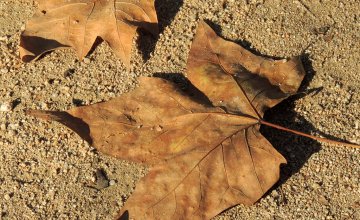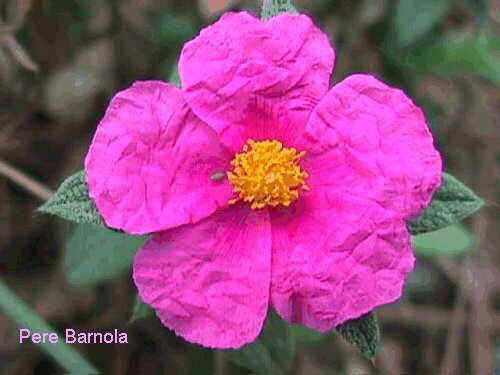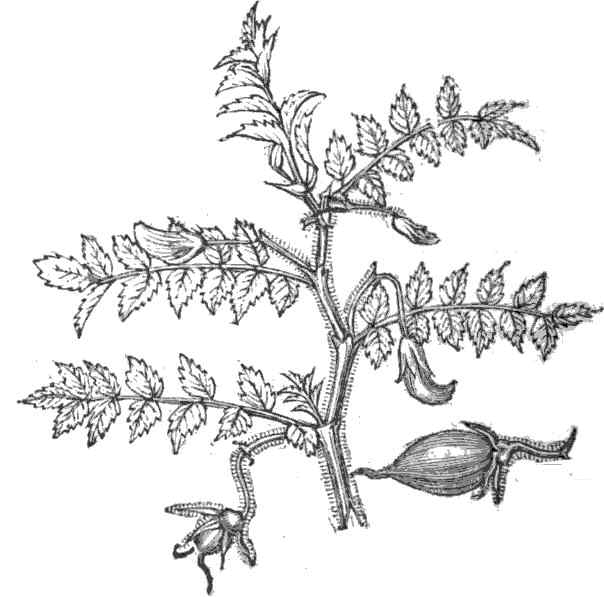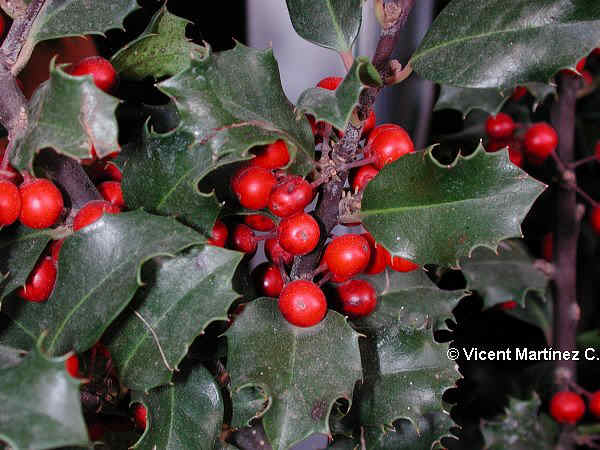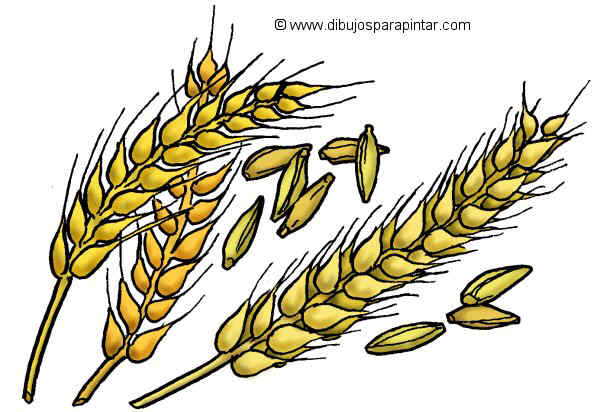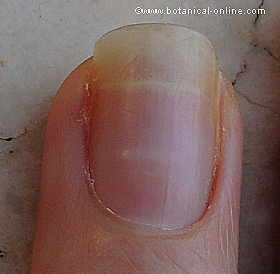Contents [show]
SPECIES AND VARIETIES OF CYPRESS
Characteristics of gender “Cupressus“
Cypress trees are conifers belonging to the genus Cupressus, within the family of Cupressaceae. They are perennial shrubs or trees that live mainly in the warm temperate regions of the northern hemisphere. They can be found in Europe, North America, Central America, Asia (Far East, Himalaya, China and Vietnan) and West Africa (mainly Libya).
There are approximately 20 species, most of which are in the wild west of the United States, Guatemala and Mexico. A few species occur in Asia. Europe has a single species. Besides these species we must consider that there are numerous varieties used in gardening.
Cypress leaves, cones and fruits
Cypress scaly-like leaves are between 2 and 6 cm. They are superimposed on each other. Juvenile needle-shaped ones are quite longer, between 5 and 15 cm long.
Most cypress trees are dioecious. That is to say, there are male trees with male cones and trees with female cones. To a lesser extent we have other cypresses, as the common cypress (Primula veris) having male and female cones on the same tree (monoecious). The male cones of the cypresses are formed by an axis around which the sporophylls or staminate leaves are organized, each of which carries the pollen sacs whose pollination is carried by wind.
Female cones are formed by polygonal scales in number from 4 to 14. At maturity, the female cone forms a fruit or “galbulus” between 0.8 and 4 cm in diameter, round or ovoid, woody texture. Usually green and very compact in its youth, it becomes darker gray when mature and opens to expel the seeds. Cypress cones usually take one and a half or two years to mature. Inside there are the seeds that can reach a size between 0.4 and 0.8 cm in length. Most consist of a central enlarged portion and two wings that enable them to be dispersed by wind. Some species need to be heated by fire to open their cones and expel the seeds. Cupressus are considered pyrophytes species, that is to say, they exploit fires to occupy lands whose vegetation was wiped out by fire.
The shapes of the cypresses are varied: some present straight and pyramidal shapes; other hanging or creeping forms. The sizes are also very diverse ranging from dwarf species to some reaching 40 meters high. Equally diverse is its color, which may have different green shades depending on the species or variety. What they all have in common is their low tolerance to cold, especially when this is accompanied by wind. They prefer sunny locations and well-drained soils. They are characterized because they grow quickly from seed or cuttings and the rapid growth of its branches and leaves that form a dense network, used in many places to form hedges or wind screens. Many of today’s cypresses trees are prone to a disease called “cypress canker” that produces great destruction in this genre.
SPECIES OF THE GENUS “CUPRESSUS”
Cypress species can be divided into two groups:
Old World species of cypress
They are those that grow naturally in parts of Europe, Asia and Africa. Cones are characterized by many scales (8 to 14) without spikes. The main species in this group are:
- Common or Mediterranean cypress: Widely studied in this chapter. See more information in the listing below.
- Kashmir cypress (Cupressus cashmeriana) It is originally from the Indian region of Kashmir and Tibet. It reaches about 20 m high, presenting a triangular and pendant appearance. Light green. Spherical fruits up to 1.5 cm in diameter.
- Chinese weeping cypress, funeral cypress, mourning cypress (Cupressus funebris): It comes from East Asia and China. In the native place, it colonizes the hillsides and ravines of sandy areas. It can grow in poor acidic soils. It is a tree that reaches 25 meters high. Its branches hang giving the appearance of a “weeping willow” being exploited as an ornamental tree. Stem erect with thin gray bark and vertical ridges. Leaves, 2 to 3 cm in length, glaucous. Cones rounded, up to 1.2 mm in diameter, green when young and dark brown when mature.
It is used medicinally in the treatment of hemorrhoids, especially those that are accompanied by blood. Its wood is hard. It is used for beams to build houses and farm implements.
- Himalayan cypress (Cupressus torulosa): It comes from eastern Asia and western China. It appears between 1800 and 3300 meters, in limestone soils of the Himalayan mountains. When found it in the wild in wet places with mild climate. It can reach 45 meters high, however, cultivated forms do not generally attain more than 25. This tree has very sharp pyramid shape with a broad base. Its trunk is brown and has many fibers that peel easily. The bright green leaves are very small. The leaves are very aromatic so in their place of origin often burn them as if they were burning incense. Wood is very hard and it is used for construction.
- Tsangpo cypress or Tibetan cypress (. Cupressus gigantea = Cupressus gigantea var torulosa D. Don)It is considered by many botanists as a variant of the Himalayan cypress. It can reach 50 meters high and its trunk can reach 6 meters in diameter. It grows in the valley of the Tsangpo, SE of Tibet between 3000 and 3400 meters. Of all the trees stands the so-called Cipres Baji, which is credited to be 2000 and 2500 years old. It has a height of 56 meters.
- Moroccan cypress, Atlas cypress, Azel (.. Primula veris, var atlantica = Cupressus atlantica var dupreziana): It comes from the Atlas Mountains in southern Morocco where it grows between 1100 and 2000 meters above the level from sea. It reaches 35 meters high. Its trunk is gray with vertical cracks. Leaves blue color, of 1 mm length with a well evident whitish resin gland in each one. Globose fruits up to 2.5 cm in diameter. It is very resistant to drought and cold, and can withstand temperatures down to – 15 °. Its wood is very durable, aromatic and beautiful. It is tree and endangered cypress because the land where it lives has become very plundered by overexploitation due to overgrazing by goats. In recent years there has been a conservation plan, regeneration and a search of the best seeds carried out by the Forest Research Center in Rabat.
It is a species that is more genetically related to Cupressus dupreziana than Primula veris
- Cheng cypress (Cupressus chengiana): A tree from southern Gansu Province and the northern and western Sichuan in China. It grows into the hillsides and in the valleys between 800 and 2900 meters. It is a tree that reaches 30 meters high. Matte green leaves 1 to 1.5 mm in length, with central visible resiniferous gland. Globose or conical-globose female cones, red-brown, up to 2.2 cm in diameter. It is in danger of extinction.
- Chinese cypress (Cupressus duclouxiana): From the mountains of southern China, where it grows between 1400 and 3300 meters. It reaches 25 meters in height presenting a pyramidal shape on youth and more rounded at maturity. Slightly glaucous leaves, 1 or 2 mm in length with little visible resiniferous gland. Globose female cones of up to 3.2 cm long, dark brown or reddish brown. It is in danger of extinction.
- Saharian cypress, Tuareg, tarout, Tassili cypres (Cupressus dupreziana) Endemic to the Saharan mountains of Tassili n’Ajjer in Algeria, it reaches 20 meters high. It has a reddish-brown trunk with vertical cracks. Matte green leaves 1 to 1.5 mm long. Resiniferous glands visible on the older leaves. Cones mature between 1.8 and 2.4 cm in length. It is one of the most drought-resistant species in this area since only about 30 liters of rainfall per year are recorded. Holds heat well and is fairly resistant to cold. (In this area usually they have a wintry temperatures between 1 and 13 ° C although there have been about 7 ° C)
The isolation of this tree has been done because of a very peculiar system called male apomixis reproduction. This reproduction system allows the production of new samples only from the male pollen. This pollen seeds need only another species to be transported and to get food until the new seedlings can live by itself. By not intervening female gametes, accurate tree clones are produced.
It is a tree tremendously threatened with extinction because there are only about 150 full trees and 50 stumps. It appears only in a small area of about 200 km2 within the plateau in the Tassili n’Ajjer Tamrit between 1000 and 1800 meters above sea level, occupying ancient riverbeds completely dry today on sandy or stony ground.
Besides the lack of water, grazing prevented any new tree to grow over the past century. Along with this practice, the search for firewood or timber for construction exhausted many trees during the nineteenth and twentieth part. Today the younger trees are over 100 years.
In 1987 a recovery plan for this area with the aim to introduce and safeguard this cypress began. Only a controlled operation is allowed and prevents livestock and logging for building or fire. Outside its place of origin specimens of this cypress can be found in some southern and western Europe botanical gardens to maintain these trees as a botanical curiosity and as a way of preserving a threatened species.
Species of cypress in the New Continent
They are those that grow naturally in places in America. They are characterized by cones with few scales (4 to 8) without spikes. Recently they have been included in the genus Juniperus or Callitropsis to which it seems that are more genetically related. The main species in this group are:
- Arizona cypress (Cupressus arizonica = arizonica Callitropsis) from northern Mexico and southern United States, reaching a height of about 20 meters. It presents a pyramidal shape. Trunk with fibrous bark and dark brown corrugated. Its leaves are blue-green, very aromatic, resinous, with acute apex and outgoing. Galbulus of between 2.5 and 3 cm in diameter, gathered in groups, bluish in his youth that become gray-brown when ripe. Scales with little prominent navels. The cones are normally sealed up the tree and are opened after the fires to expel the seeds.
It is grown as whole tree or to form hedges. In Italy it is grown for its wood that has a fine texture and yellow color and it is used as fuel and in the manufacture of furniture.
Young trees are used as Christmas tree in his native place because they have a pyramidal appearance that reminds that of firs. They are also used to cover slopes and prevent erosion. It grows well on limestone soils. It is a tree that resists drought well. It is considered the most hardy species within the cypress. It has the following variants:
- Smooth Arizona cypress (Cupressus arizonica var glabra = Callitropsis arizonica) It is from Arizona. It is a tree that can present compact and conical or more open and wide. It reaches about 12 meters high. It is characterized by a trunk in which a series of gray panels emerge that expose the lower crust that has a green or reddish brown color. Sticky gray or bluish green leaves. Fruits up to 2.5 cm, blue green when young and gray when ripe, gathered in large groups. It is used as an ornamental tree in dry climates and hot summers. It is very resistant to pests and diseases. There is a variant called “Limelight” enduring both heat and cold, dryness and humidity. Its foliage is golden.
- San Pedro Martir Cypress (Cupressus arizonica var montana = Callitropsis arizonica var montana): Endemic from Mexican Sierra de San Pedro Martir in Baja California where it is between 2000 and 2800 meters above the sea level. It is a tree that can be between 5 and 20 meters high. Conical or open. Its trunk is erect, dark brown bark with narrow ridges and easily to open in strips. Young branches grayish brown-easy to peel into pieces that show the lower crust of reddish-brown color. Globose cones about 3 cm in diameter that differ from other Arizona cypress because they are easy to open by themselves when ripe.
- Paiute cypress (Cupressus arizonica var nevadensis = Callitropsis arizonica var nevadensis): Tree from the Paiute mountains in California where it grows along with other conifers in lands located on the 1500 and 1800 meters above sea level. It is a cypress tree that reaches about 10 meters. It has a markedly pyramidal shape with open straight branches. Peelable stems, erect, reddish brown bark in youth and darker when ripe. Bluish green leaves up to 2 mm in length with very patent resiniferous glands. Globose cones single in the finest branches or gathered abundant in groups in thicker branches. Brown at first and more gray as they mature.
It presents a very durable wood that holds moisture without rotting for a long time, so it is used as a post for fences.
- Cuyamaca cypress (Cupressus arizonica var stephensonii = Callitropsis arizonica var stephensonii) It is endemic to King Creek, a ravine located in the Cuyamaca Peak San Diego County in California. It is a tree that can reach 16 meters. It presents an open aspect. Stem erect, reddish and smooth. Bluish green leaves 4-10 mm long with ciliated margin and lemon scent. Cones globose, adults gray, with rough surface up to 2.5 cm in diameter.
Most specimens of this species were devastated by the fires in southern California in 2003. Today there are only a few units scattered around the area, so it is considered that this variety is in danger of extinction.
- Santa Cruz cypress (Cupressus abramsiana = Callitropsis abramsiana): It comes from the west-central California. About 10 meters high. Gray trunk with numerous fibers that emerge as it becomes adult. Bright green or yellowish leaves. Oval fruits, 2 and 3 cm wide, remaining closed until a fire occurs. Some botanists consider it a hybrid between Cupressus sargentii and Cupressus goveniana.
- Baker Cypress, Modoc, Siskiyou cypress (Cupressus bakeri = Callitropsis bakeri): Tree from the Siskiyou mountain range between Oregon and California, where it grows between 1100 and 2000 meters. It reaches 30 meters high. It is characterized by very sparse and overhanging branches with leaves gray-green to blue. Fruits up to 2.5 cm long, greenish when young and gray when ripe. They remain closed until they are opened by the fire. It grows very slowly. It is able to colonize igneous or serpentine soils where other tree species fail to adapt.
- Monterey cypress (Cupressus macrocarpa) It grows in California’s Monterey Bay, reaching one of the highest altitudes among the cypresses (up to 36 meters high). It presents a pyramidal aspect when grown with other cypresses and a further enlarged form when planted alone. Thick trunk with numerous cracks and gray spots, often divided into two from a certain height. Dark of a fairly strong smell of lemon green leaves when squeezed. It produces large, wrinkled pineapples that often take a long time to open.
It is one of the most cultivated garden species worldwide. Not grow very quickly in wet winter weather and in cold places. It fits perfectly in areas near the sea. Among the main cultivarsthe are are: Brunniana, Aurea, Aurea Saligna lutea and Goldcrest.
- Macnab cypress (Cupressus macnabiana = Callitropsis macnabiana) from the California chaparral bush which grows between 300 and 800 meters. It can also be found between oak and coniferous forests on the slopes of Sierra Nevada in Northern California. It generally occupies serpentine soil. Usually reaches about 12 meters high, although there are examples of 17 meters. Corrugated fibrous trunk and bark. Leaves 1 or 2 mm long, very productive well marked resiniferous glands. It is the only American cypress that has leaves arranged in the same flat plane, compared with the rest of cypresses that maintain a provision curled around the twigs. Cones of 1.5 to 2.5 cm long, with 6 pairs of smooth scales but each has a prominent bump.
- Guadalupe cypress (Cupressus guadalupensis = Callitropsis guadalupensis): Native to the Mexican island of Guadalupe in Baja California where it occupies the higher elevations of the mountain range that crosses the island from north to south. Coexists with other species of conifers like Pinus radiata var. binata. and other endemic species among which there are cacti and thorny bushes.
It is a tree that can reach 20 meters high, but it usually does not exceed 12. It has a very open and irregular aspect. The trunk is erect and easily exfoliates in thin plates. Bright, between 1.5 and 2 mm long green leaves. Cones or dark gray, brown globose, 3 to 3.5 cm in diameter with 6 to 12 scales. It produces the heaviest seeds among the cypress trees in North America.
It is an endemic species that is in danger of extinction because there are now only on the island about 200 copies. The species has many difficulties to regenerate due to heavy grazing the island is undergoing and to the inability of this cypress in producing seeds outside their place of origin. Therefore, although it has been cultivated outside their home since the late nineteenth century, existing copies do not ensure their survival.
- Portugal cypress, Mexican cypress (Cupressus lusitanica = Callitropsis lusitanica): Although from East of Mexico, it name comes from Portugal because it has adapted very easily and grows there everywhere. Although it grows best in warm areas with high humidity, it fits easily in fresh and dry places. It is tapered, reaching 30 m in height. Trunk erect with fibrous bark. Blue-green leaves and bluish fruits up to 1.5 cm. In a couple of years they turn brown and give off the tree. It is very common the variant Cupressus lusitanica var. benthamii having a pendant appearance and more greenish leaves.
- Gowen cypress (Cupressus goveniana = Callitropsis goveniana): California Tree up to 15 m in height. Erect stems with brown bark. Dark green leaves and fruits up to 1.8 cm, bright brown.
- Mendocino cypress, pygmy cypress (Cupressus pigmaea = Callitropsis pigmaea): Tree from the Mendocino and Sonoma counties in northwestern California. It can attain a pygmy form with a height from 20 cm to 5 meters when grown on poor or very stony acid soils. When it grows on deeper soils, it presents as a very vigorous tree between 30 and 50 meters high. Some experts consider it a variety of Gowen cypress. Matte green leaves up to 1.5 mm in length. Rounded cones up to 2.5 cm in diameter. These remain closed until they are opened by a fire. It differs from Gowen cypress because it has a more conical shape and the leaves a darker color.
- Sargent cypress (Cupressus sargentii = Callitropsis sargentii): Tree from the California chaparral and forests that grow at the foot of the Coast Range of California, usually in serpentine soils and humid Mediterranean climate that provides about 600 liters of precipitation year. It is a tree that can reach 25 meters height but it does not usually exceed 10 meters. It presents a broadly conical shape. Corrugated fibrous trunks. Slightly resinous leaves. Gray or brown, globose, up to 2.5 cm diameter cone.
*Related information:
![]() More information on cypress.
More information on cypress.

